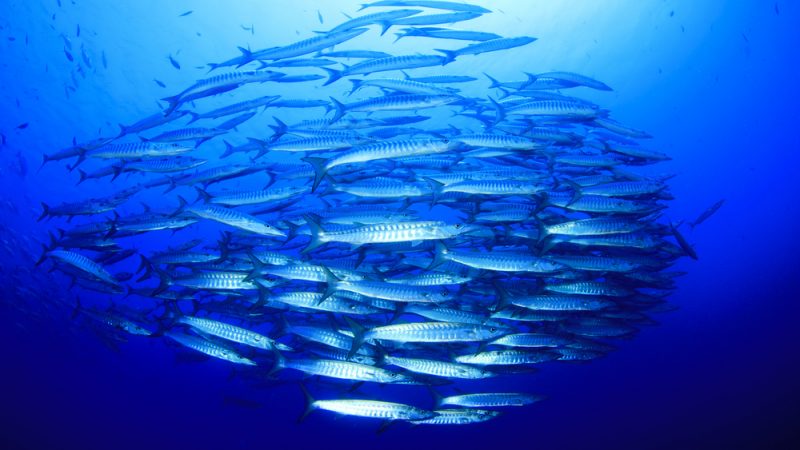The high seas make up nearly two-thirds of the world’s ocean, but less than 1% is currently protected. All this could change this September, when governments come together at the United Nations for an intergovernmental conference to negotiate a new treaty that would create a mechanism for protecting these ocean areas, writes Liz Karan*
The high seas make up nearly two-thirds of the world’s ocean, but less than 1% is currently protected. All this could change this September, when governments come together at the United Nations for an intergovernmental conference to negotiate a new treaty that would create a mechanism for protecting these ocean areas, writes Liz Karan*.
Today (21 June) in Paris, government officials from France, Monaco, Spain, and the European Union will join civil society representatives to take another step toward a critical goal—developing an international treaty to protect the high seas.
It took years of international discussions to get to this point, and the road to a final treaty has many challenges. But the June meeting—and the September launch of formal negotiations—offer France and the rest of the EU an opportunity to show critical leadership, drive the discussions forward, and improve the health of our ocean.
As such, participants must reaffirm their commitment to developing a cohesive, global body that will manage and protect high seas areas.
Making up nearly two-thirds of the world’s ocean, the high seas are areas beyond national jurisdiction that belong to everyone—but lack comprehensive marine protections. They are remote but vital to life on Earth, serving as home for an array of marine fauna and flora, and a throughway for migratory species including whales, sharks, tuna, and sea turtles.
The high seas store large amounts of carbon, helping to regulate global air temperatures and slowing the impact of climate change on land. In 2014, the economic value of removing this carbon from the atmosphere was estimated at US$74 billion to US$222 billion per year.
High seas fisheries are worth up to US$16 billion (gross value of the catch) each year. Further, 90% of world trade is carried out via international shipping across these ocean areas, and while that activity is not dependent on healthy marine ecosystems, how it’s conducted affects sea life.
But despite widely accepted data showing the economic and environmental value of the high seas, there is little in place to ensure the conservation of biodiversity there. More than 20 regional and global bodies have some jurisdiction over extractive activities from fishing to shipping to seabed mining, but there is no mechanism for managing communication across all these organisations—let alone for developing and agreeing on comprehensive conservation measures.
A treaty could address this governance gap by putting in place a legally binding mechanism to establish high seas marine protected areas (MPAs), which are proving effective in conserving ocean life without harming the economy.
In recent years, MPAs and fully protected marine reserves have been created or proposed in places as diverse as the Ross Sea off Antarctica, and the national waters of Palau, Chile, and the French territory of New Caledonia.
While this recent surge in governments championing marine protections is an important step forward, effective MPAs still cover only about 3% of the world’s ocean and only 1% of the high seas.
That’s far short of the international community’s commitment under the U.N.’s Sustainable Development Goal 14 to protect 10% of the ocean, and farther still from the 30% protection that science shows is needed to ensure a healthy ocean far into the future.
This demonstrates the need for a high seas treaty, and there are signs that world leaders agree. In December, upon adoption of the resolution to begin treaty negotiations, French Minister of Foreign Affairs Jean-Yves Le Drian said, "France has made the protection of marine biodiversity one of its foreign policy priorities.”
It’s encouraging that France, a leader in EU policy, will participate in the June 21 discussion on the need for increased high seas conservation.
The timing is excellent as well. In September, after more than a decade of talks, the United Nations will begin formal negotiations for the treaty—discussions that will continue during three more meetings of the Intergovernmental Conference planned through mid-2020.
EU leaders will play a pivotal role in these talks, building on the strong position they’ve already established. For example, in March the EU Commissioner for Maritime Affairs and Fisheries, Karmenu Vella, noted to the European Parliament’s Environment Committee that "the EU is leading the way on protecting biodiversity beyond national borders through the … United Nations negotiations this year.”
And the EU Council, in its recommendation to move forward with high seas treaty negotiations, mentioned the need to create "a global network of effectively and equitably managed, ecologically representative, and well-connected systems of protected areas,” aligning the Council fully on the conservation-minded side of the agreement.
It’s often said that we have the ocean to thank for every second breath we take, something the treaty negotiators should remember as they enter talks to protect the vast and valuable high seas—waters that are crucial to a healthy marine environment, which, in turn, is essential for communities, economies, and the continuation of life as we know it on Earth.
(*Liz Karan directs The Pew Charitable Trusts’ work to protect ocean life on the high seas. / www.euractiv.com)




